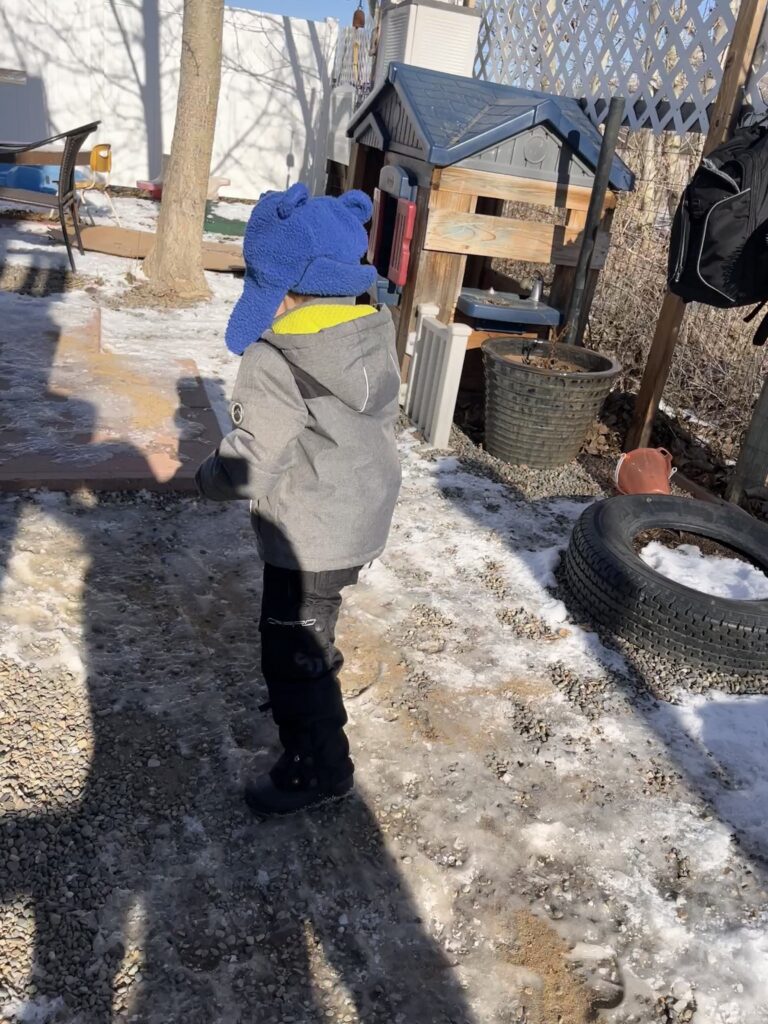It was an icy morning and when we went outside, I saw the walkway of the backyard packed with ice, so I decided to spray some salt and sand to the surface. Most of the children were too busy to play and did not even notice me spraying the salt onto the ground, except for M. He abandoned the bike he was on, ran to me, scooped the salt on the ground with his finger, and put the finger in his mouth. I almost shouted out “not in your mouth” but had a second thought and just told him what I was doing, and what the salt was for. He was still curious and followed me while I was spraying. He had the curious look at the salt and at me, so I asked him if he wanted to help me to do the spraying. Of course, he said yes.
It was fun to watch M spraying the sand. He did exactly what I did earlier, shaking the sand out of the container to the surface of the ice. He asked me, “Like this?”, and I confirmed him by saying yes, and told him that I liked how he was helping me.
I couldn’t tell which one he enjoyed more, the action of shaking things out, or the sound of shaking the salt, but what I could tell was that he lost his interest in tasting the salt. Within a few minutes the spraying was done, I thanked M again, and he walked away happily and was back on the blue bike again, looking for another entertainment.


About the learning and my reflection
M is a child who has not been in the program for almost one month, and during this first week he came back, there were some behavioral challenges to others from him. I have noticed that most of his behaviours are sensory-driven, just like what happened here, he used his fingers and tastebuds to feel and understand the salt. Knowing that he would not simply give up trying even if I told him not to do that, I made the choice to enrich his understanding to the salt by description and action.
The dynamic in the program has changed since M came back. My mentor educators and I have tried many ways to support him and assigning him some tasks to help us is one of them. In this moment, he showed us his capability of attention, learning and engagement, which may not be happening if he was simply stopped from licking the salt, and this is also why I take this moment as a significant one. This moment also reminds me to look deeper into his needs, connect his needs to the daily activities that we have in the program, and offer learning opportunities for him.
What I am making visible here, is the idea of children can engage with their own ideas, theories, and inquiries in ways that are meaningful to them (BC Early Learning Framework, 2019, p.68), as well as the idea of educators consider and include every child’s way of being, doing, and learning so that every child can participate, and their abilities and interests are honoured (BC Early Learning Framework, 2019, p.22).
I reflected what I did at the moment based on my narration, and wondered about why my first reaction seeing him licking the salt was to stop him. Is it possible that my image of M being a “difficult” child has influenced my first reaction? What if I already see M as a sensory-driven child and offered him the option of spraying the salt from the beginning? In what other ways might he explore the salt?